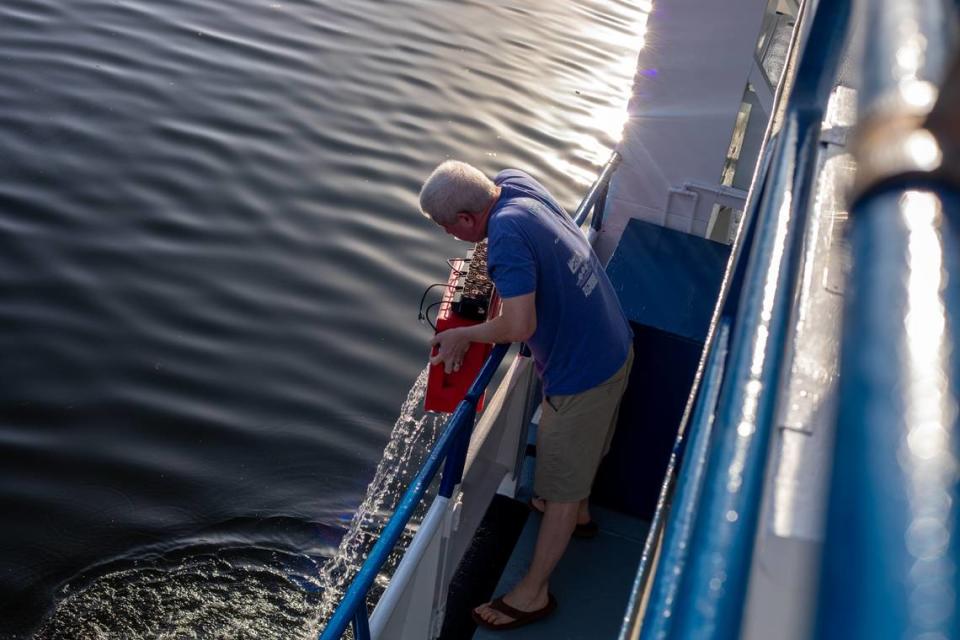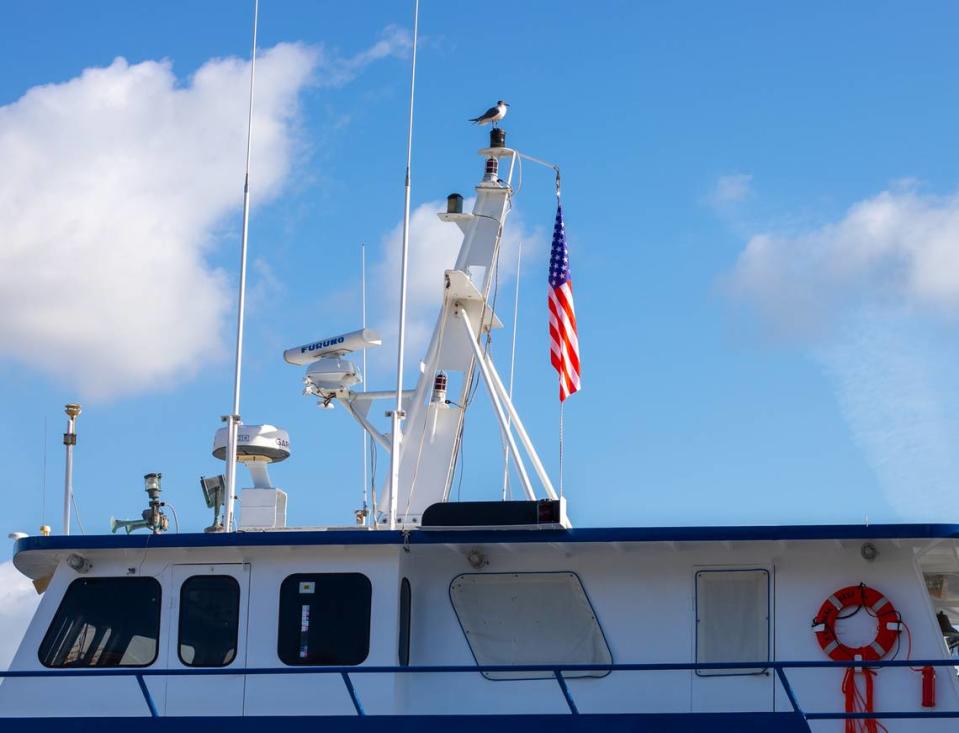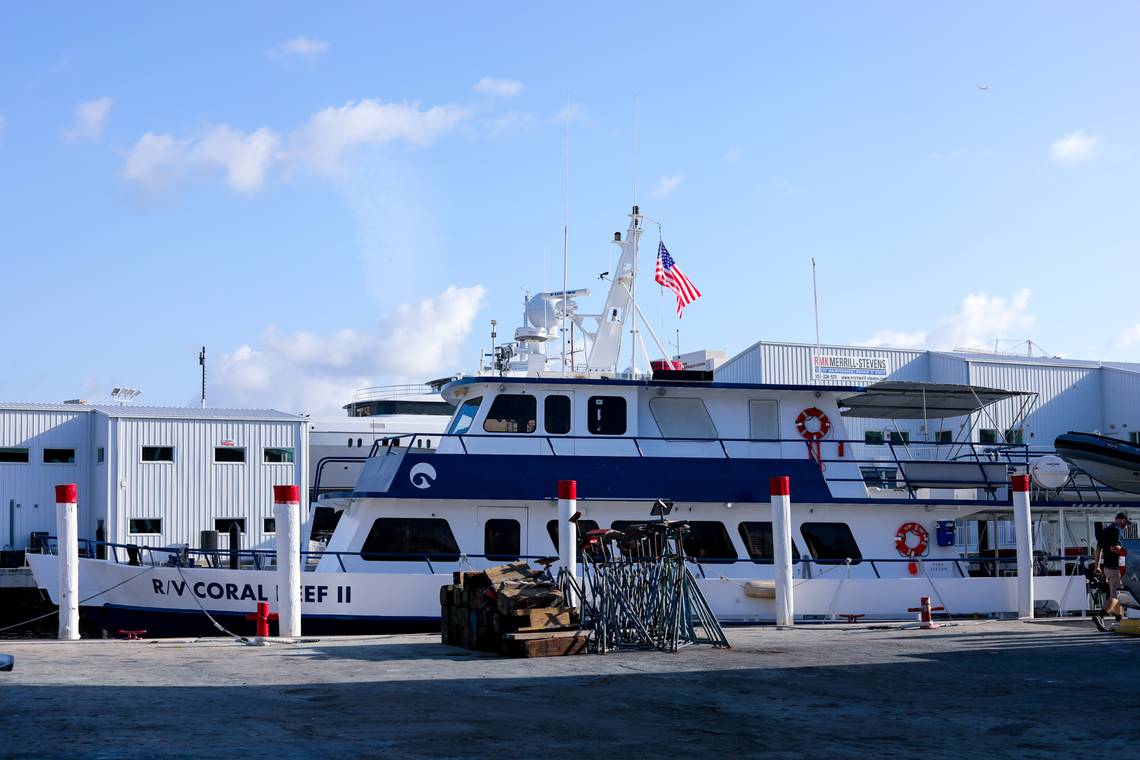Bridget Coughlin, the CEO of the Chicago-based Shedd Aquarium, said their research vessel named the Coral Reef II is docked in Miami because of the diversity of marine life in the area.
Look inside the Coral Reef II
“We teach climate change through empathy with animals,” said Coughlin. “If you talk about how otters are starving, that empathy for that otter is going to catalyze you to act.”
The vessel can go out to sea for three weeks at a time and can travel as far south as the Dominican Republic. The researchers study a plethora of animals including queen conch, endangered rock iguanas, sharks and climate change’s impact on the coral reef. From March through October, the crew often works days that stretch from 7 a.m. to midnight.

How to come aboard the research vessel
The Coral Reef II also acts as a live-in laboratory for aspiring marine biologists. High school and college students can go on a weeks-long journey that includes snorkeling in crystal-clear water with Caribbean reef sharks and working side-by-side with scientists. Chuck Knapp, a 30-year employee of Shedd and the head of conservation on the vessel, said he got his start that way.
“I was originally a high school marine biology student back on the boat as a 17-year-old in the late ‘80s so it’s been a thrill of a lifetime to come back,” Knapp, who gave a tour of the vessel in the video said.
This summer, high schoolers will be taking a trip to the Bahamas to learn about how to protect dolphins, snorkel shipwrecks and observe firsthand from Shedd’s shark research biologist.


Conducting research on coral reefs bleaching
One of the most unique parts of the vessel is its live well system, which consists of large built-in tanks at the front of the boat filled with seawater. These mini aquariums are a safe harbor for wildlife that scientists are trying to study or move. The live well system makes it easy to scoop marine life like coral up, perform heat stress tests and return them back to sea in hours.
Ross Cunning, a coral biologist with Shedd, said researchers can use technology onboard to test how well the coral absorbs sunlight and observe what temperature and speed cause corals to bleach. Even two corals of the same species might bleach at different speeds, and they’re looking for the most heat tolerant coral, Cunning said.
Last summer he worked alongside South Florida research groups, like the University of Miami, the Coral Restoration Foundation, and Reef Renewal to test snippets of these baby corals in nurseries that have been growing in higher water temperatures.
“Finding interventions to boost the heat tolerance in coral reefs is more important than ever,” Cunning said. “But the most critical thing we need to do is stop climate change. All the research in the world will not boost coral heat tolerance enough to cope with oceans that continue warming. We must stop the root of the problem and stop greenhouse gas emissions as quickly as possible.”
Ashley Miznazi is a climate change reporter for the Miami Herald funded by the Lynn and Louis Wolfson II Family Foundation in partnership with Journalism Funding Partners.
